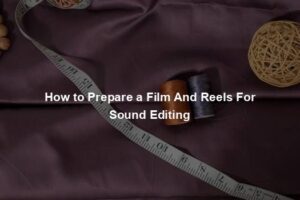
In this series, I set out to look at the different stages that sound engineers take in opening their studios. Just like everyone else, they have to start from somewhere. They don’t just wake up one day and they have a huge studio with all the expensive equipment. Stage one of this series, I wrote about the bedroom audio studio and in this article, we will look at stage two, which is the dedicated home studio.
In the bedroom studio, we looked deeply at some important equipment that would come in handy, and help you make the most out of your bedroom studio. We noted that the most important equipment is a computer and other budget audio equipment that will work well with it.
Compared to a bedroom studio, a dedicated home studio is bigger with more equipment. It serves the same purpose as a bedroom studio, but has a bigger space, with more valuable and useful equipment. There is no problem with a bedroom studio if you want to record in your bedroom studio forever, do so. However, if the plan is to own a state-of-the-art studio, the next step from a bedroom studio is to set up a dedicated home studio in your house. You can get a room and dedicate it to housing your home studio. After getting a specific room for your studio, be sure to get the following equipment.
- Desk/Workstation.
- Studio Chairs
- Bass Traps.
- Acoustic Panels.
- Diffusers
- Reflection Filters.
- Monitor Isolation Pads.
- Studio Monitor Stands.
Now let’s inspect each one…
1. Desk/Workstation.
Since you have more space to set up more equipment, be sure to get yourself a workstation or a desk where you will work from. To make sure you maximize the space in your new room, have a desk to set as the centerpiece. The most important thing you should take into consideration is that as much as you have a bigger space you should be careful not to crump it up in no time by getting a bigger than life, workstation. Also, be sure not to go overboard by spending too much on a desk and end up not getting the most important equipment for your studio.

2. Studio Chairs.
Since you have invested in a good centerpiece for your home studio, which is a good workstation desk, it only makes more sense to get studio chairs. You can invest in any kind of chair. Be sure to take comfort and back support as the number one factor. Folding chairs are the best because after using you can just fold it and put in a corner, it helps in making sure the place doesn’t look cramped up. If you do not have the financial capacity to get studio chairs, you can opt for a simple chair in your home and save for better studio chairs. Chances are you will end up spending more time in your studio, so the more comfortable the chairs are, the better.

3. Bass Traps.
Why do you need bass traps? Well, recording anything in your studio without some acoustic treatment will be hard, and that is why you will end up needing some bass traps. Unlike any other form of acoustic treatments, bass traps offer broadband absorption across the entire frequency spectrum, and are good at absorbing lower frequencies… which causes most problems in any studio, especially in smaller rooms. Since it will help in ensuring that the quality of your recorded sound remains perfect, it is important to invest in it.

4. Acoustic Panels.
Since you have already invested in bass traps by now, the next best thing to invest in is acoustic panels. They might not be the best in absorbing bass frequencies, however, they help in absorbing frequencies in the low-mid to high range and they also come in handy in taming standing waves on any recording. Standing waves usually cause major acoustic problems in rooms with parallel walls, where sound reflections bounce back-and-forth in the same spot. In typical home studios, where the room is likely to be cubical, standing waves are especially problematic, which is why acoustic panels are a must-have.

5. Diffusers.
So far our studio is coming up well. You have invested in a good work station, studio chairs, bass traps, and acoustic panels, the next best thing to invest in is diffusers. As much as this might cost you an arm and a leg, it is very important to invest in it. It will definitely come in handy when you upgrade your studio because you won’t have to buy it again. Diffusion is an important element of acoustic treatment, it creates a nice natural ambiance without removing too much of the “liveliness” from the room. Diffusers help in scattering out any form of sound energy in a room by allowing frequencies to disperse randomly, rather than build up unnaturally in certain spots. It’s not that important, as you can always invest in them further down the road.

6. Reflection Filters.
This might be super expensive and financially limiting for a small studio like a dedicated home studio, but I do not know your financial capacity so I won’t rule it out for anyone. Is it a piece of important equipment? Yes, it is, but can one do without it? Yes, they can. This is one piece of equipment that you should get if you can afford it. It is usually useful for recording, where it can help you skip the hassle of treating your entire studio by capturing sound reflections before they ever enter the room. They work wonders, but not as good as proper acoustic treatments. They are a good investment, for sure.

7. Monitor Isolation Pads.
These are usually used to improve the quality of the sound in the room. Monitor isolation pads usually go a step further in ensuring that your sound is good. You can place them directly on the desk which will insulate that sound vibrations transfer through the surface of the desk from the monitors. Without these, any objects receiving the monitors’ vibrations may cause new and unpredictable resonances. The monitor isolation pads will help with this problem by creating a buffer of acoustic isolation between your monitors and desk, preventing any vibration from transferring.

8. Studio Monitor Stands.
Studio monitors will help you take your monitor position a step further. Since you have a bigger space, then it is advisable to invest in monitor stands. Many people usually have the monitors on the surface of their desks, but with monitor stands, you can position them perfectly. It will allow you to work well with the distance, height, and angle and also allow you to adjust them to your liking. They’re a big help because to get the most accurate sound from your monitors, they need to be in a very specific location in relation to your ears.

As we have seen, it wouldn’t be wrong to say that a dedicated home studio is better than a bedroom studio. I’m not saying that a bedroom studio is not good or it won’t help you out with your audio recordings. What I’m saying is that a dedicated home studio is more efficient and has better equipment that will help you create professional-quality audio recordings. Space is bigger compared to that of a bedroom studio, so you won’t feel cramped and uncomfortable when working in your studio. There is also a workstation where you can work from and which will make your work simpler.
If you would love to upgrade and get a bigger and more useful studio than a bedroom studio, or to even hire an extra pair of hands to help you in your work, the home studio is your best bet. Compared to a pro studio, it is very inexpensive and will still serve the same purpose. By going out and investing in all the different equipment I have mentioned, you will have one of the best home studios. Depending on your workload, expanding and getting a bigger space will be very important and would work to your benefit. But if you are just working by yourself and do not need a bigger space for your studio, you can still opt to work from your bedroom studio. When the time comes where you would want to work with even more people and make it more professional, you will need to invest and get a semi-pro or a pro studio.







